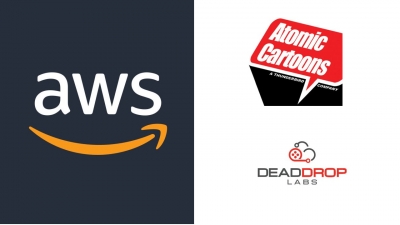
Atomic Cartoons brings to life animated tales with creative scattered across multiple locations, including Vancouver, Ottawa, and Los Angeles. Since 1999, when the studio was founded, rendering was done using its own co-located infrastructure, scaling up with rented nodes from local vendors during production peaks. However, with demand for content booming, the studio’s increased needs often extend beyond the resources of its traditional rendering technology.
But in the wake of old technology comes new. Unimaginable advances in cloud-based rendering are turning the tables on the entire production pipeline. To optimise and embrace the cloud, the studio has tapped DeadDrop Labs for custom cloud integration solutions to help scale its pipeline on Amazon Web Services (AWS).
Atomic Cartoons IT director Hanoz Elavia said, “ If my local vendor doesn’t have nodes when I need them, I’m stuck, and not being able to scale puts our productions at risk, AWS provides us the flexibility to spin up in the cloud, use instances, and turn them back down. Regardless of what we need, chances are that AWS will have the instances available because of its high capacity.”
After evaluating cloud providers, Elavia opted to move forward with AWS. Looking to get the studio’s cloud implementation up and running as soon as possible, he enlisted solutions integrator DeadDrop Labs to create a custom interface between AWS and Pixar Tractor, which the studio uses for render farm management. The setup allowed the studio to leverage Amazon Elastic Compute Cloud (Amazon EC2) without a major overhaul.
Elavia also added, “We use Tractor at all our sites and didn’t want to redo our entire pipeline to access the cloud. Bert and the team at DeadDrop Labs were very helpful in setting us up, and the implementation was seamless. We started with our largest studio, Vancouver, and they were so accommodating. Now we’re working on expanding company wide.”
Elavia chose Vancouver as the test bed due to its higher render needs and because its artists create 2D and 3D animation, while Ottawa and Los Angeles primarily handle 2D work. The studio’s 2D animation is typically done on Windows-based workstations using Toon Boom Harmony, while 3D artists use Autodesk Maya, Foundry’s Katana and Nuke, and SideFX’s Houdini on Linux-based workstations. With the integration in place, AWS has become a valued resource for Atomic Cartoons, especially for 2D work, which the studio plans to render almost entirely on AWS.
Elavia added, “It may seem counterintuitive to start big, but scale is important to us, so we wanted to test the limits. At this point, our only limitation is connectivity, and we’re working on implementing an AWS Direct Connect to scale even more. On the other hand, being able to easily scale down is important to us as well. We use what we need on AWS, when we need it, then spin it all down, so we’re only paying for resources used.”
Along with extending the AWS integration, Atomic Cartoons continues collaborating with the DeadDrop Labs team on optimization, evaluating strategies such as leveraging Amazon Simple Storage Service (Amazon S3) to package shots and accelerate render return times. Additionally, by leaning on DeadDrop Labs, the studio can redirect pipeline resources to focus on its next phase of growth, which includes developing its intellectual property (IP).
Elavia concluded, “Using AWS frees us to rethink our approach to resources. We don’t need to rent compute from a local vendor, so we can hire in locations beyond our physical studios. This applies for workstations as well. By reducing our hardware footprint, we can tap into more human resources. As an artist-driven studio, we want to be as accommodating as possible, and with AWS, we have more flexibility to do so.”

